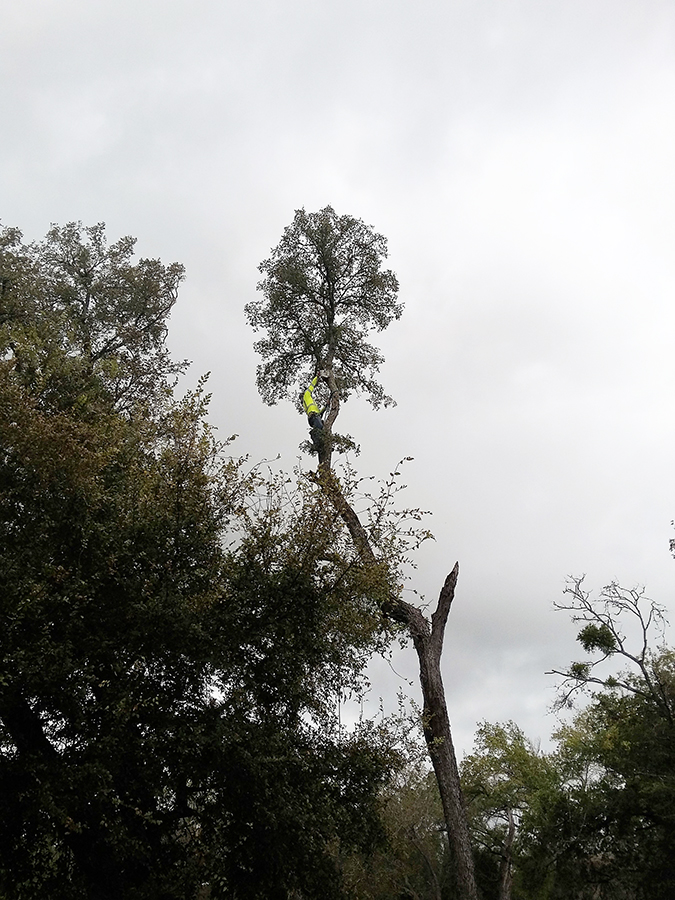We may not know if a tree makes a sound when it falls in the forest, but you can be certain you’ll notice if it falls on your house. While trees provide many benefits to our neighborhoods, major damage can ensue if you don’t remove a tree before it falls. Learning to recognize the signs that high risk tree removal is required and taking proper action can help you manage the threat and save you a lot of grief.
Perform a Tree Assessment
Trees become a potential hazard when power lines, structures, vehicles or people could be struck by them. Considering that many of the prettiest streets are tree-lined and home value increases with lush landscapes, there’s probably more risk than you’ve realized. High risk tree removal or corrective treatments depend on the hazard rating of the tree. While you should consult with a tree expert to determine the severity of the threat, there are some things to look out for.
- Check Out the Trunk
Fungi can weaken the wood and cause decay, which is a major cause of fallen trees. Although decay can be symptom-less, seams, cracks, large wounds, dead branch stubs and butt swell are signs of internal decay.
- Examine the Crown
The stress of soil compaction, extended drought, insect defoliation and/or root disease can cause branches in the upper crown to die from the top down. Inspect the crown for lopsidedness, v-shaped forks and dieback. Trees with advanced crown decline will die and require safe tree removal. - Look for Leaning
Leaning, lopsided trees can be hazards if they are near a target. In general, a tree that leans more than 15 degrees from vertical is subject to high risk tree removal. Keep in mind that trees that have grown up leaning are not as much of a risk as those were originally straight. The tree’s growth form and any uplifted soil on the side opposite the lean can help you determine when it started. - Look for Root Damage
The roots are the foundation of the tree. If they’re damaged in any way, the health and vitality of your tree is at risk. Look for stunted growth, dwarfed, discolored leaves, thin crowns, resin-soaked wood at the root collar and fruiting root-rot fungi growing near the base of the tree.
Do You Need Safe Tree Removal?
If you’re worried about any of your trees, contact a tree professional immediately. Be especially vigilant after storms with high winds, and in extended periods of draught. Always keep an eye out for pests or animals making a new home for themselves in your tree. You should have at least one inspection per year regardless, though most tree companies recommend two: one in winter and one in the summer when the leaves are still present.
The only way to completely eliminate a tree hazard is to remove a tree before it falls. When in doubt, contact your local tree experts for a tree assessment, develop a healthy tree program and schedule regular inspections.

